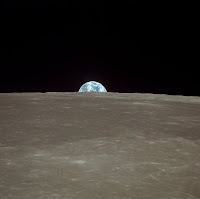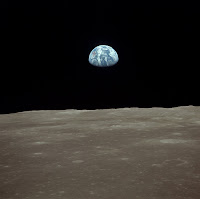The highly distorted supernova remnant shown in this image may contain themost recent black hole formed in the Milky Way Galaxy. The image combines X-rays from NASA's Chandra X-ray Observatory in blue and green, radio data from the NSF's Very Large Array in pink, and infrared data from Caltech's Palomar Observatory in yellow.
The remnant, called W49B, is about a thousand years old, as seen from Earth, and is at a distance of about 26,000 light years away.
The supernova explosions that destroy massive stars are generally symmetrical, with the stellar material blasting away more or less evenly in all directions. However, in the W49B supernova, material near the poles of the doomed rotating star was ejected at a much higher speed than material emanating from its equator. Jets shooting away from the star's poles mainly shaped the supernova explosion and its aftermath.
By tracing the distribution and amounts of different elements in the stellar debris field, researchers were able to compare the Chandra data to theoretical models of how a star explodes. For example, they found iron in only half of the remnant while other elements such as sulfur and silicon were spread throughout. This matches predictions for an asymmetric explosion. Also, W49B is much more barrel-shaped than most other remnants in X-rays and several other wavelengths, pointing to an unusual demise for this star.
The authors also examined what sort of compact object the supernova explosion left behind. Most of the time, massive stars that collapse into supernovas leave a dense spinning core called a neutron star. Astronomers can often detect these neutron stars through their X-ray or radio pulses, although sometimes an X-ray source is seen without pulsations. A careful search of the Chandra data revealed no evidence for a neutron star, implying an even more exotic object might have formed in the explosion, that is, a black hole.
This may be the youngest black hole formed in the Milky Way galaxy, with an age of only about a thousand years, as viewed from Earth (i.e., not including the light travel time). A well-known example of a supernova remnant in our Galaxy that likely contains a black hole is SS433. This remnant is thought to have an age between 17,000 and 21,000 years, as seen from Earth, making it much older than W49B.
The new results on W49B, which were based on about two-and-a-half days of Chandra observing time, appear in a paper in the February 10, 2013 issue of the Astrophysical Journal. The authors of the paper are Laura Lopez, from the Massachusetts Institute of Technology (MIT), Enrico Ramirez-Ruiz from the University of California at Santa Cruz, Daniel Castro, also of MIT, and Sarah Pearson from the University of Copenhagen in Denmark.
Image Credit: X-ray: NASA/CXC/MIT/L.Lopez et al.; Infrared: Palomar; Radio: NSF/NRAO/VLA
Explanation from: http://chandra.harvard.edu/photo/2013/w49b/



























